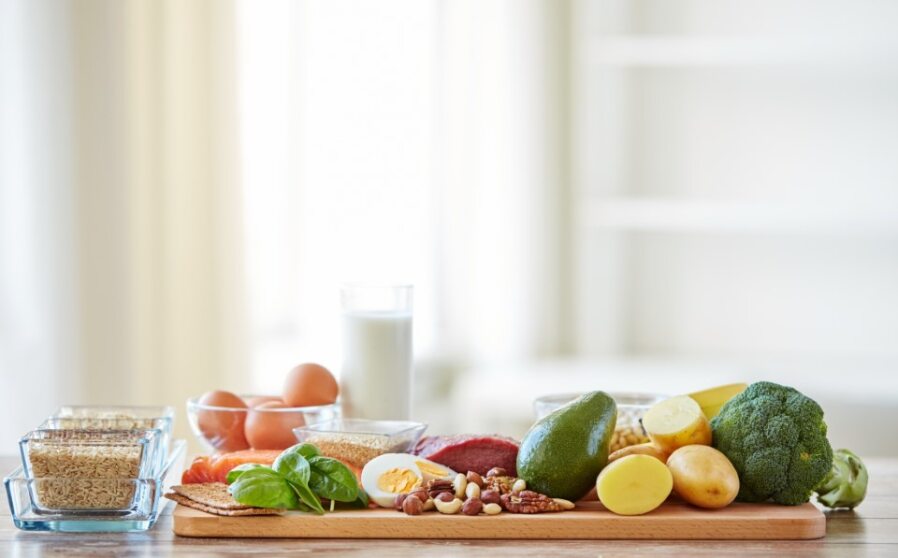When it comes to triggers for headaches and migraines, we often think of stress, sleep, and noise, but should we be taking a closer look at our diets?
With 40% of the population suffering from headache disorders globally, the link between headaches and the food we eat is one worth exploring. Interested in this, Live Football Tickets sought to find out which common foods could be causing headaches and migraines, and partnered with Dr. Hana Patel, NHS GP and GP Medico-Legal Expert Witness, to look at the relationship between diet and headaches.
Five foods that could be giving you headaches:
- Alcohol
It may come as no surprise that alcohol is one of the most common triggers for headaches. The alcohol itself, plus the dehydration that follows, is a major cause for many migraine sufferers, with reports suggesting that 36% of participants reported it as a trigger.
The same study suggested that specific drinks have more impact than others, with red wine being one of the most common offenders (the number one alcohol trigger for 77.8% of people). Whether this is down to the specific ingredients or the alcohol content, it may be wise to assess your choice of beverage if headaches pop up every time you have a drink.
- Sugar-free options
Many people striving for a healthy diet opt for the “light” or “sugar-free” options when choosing products such as fizzy drinks, chewing gum, breakfast cereals, ice creams, and more.
However, in some cases, the artificial sweeteners used in many of these diet options, such as aspartame and sucralose, have been linked to headaches and migraines. Although aspartame is not commonly a trigger for headaches and migraines by itself, it may be worthwhile to avoid it where possible if you are experiencing other triggers, such as stress, menstruation, lack of sleep, etc.
- Aged cheeses and tyramine-rich foods
Tyramine is a natural compound found in many foods, but, for those sensitive to tyramine, excess consumption is shown to trigger migraines.
Aged cheeses contain high amounts of tyramine, and the longer the cheese has aged, the higher the tyramine content. This is bad news for migraine-sufferers who are lovers of cheddar, blue, feta, swiss, or parmesan.
Other tyramine-rich foods include cured or processed meats such as pepperoni, salami, hot dogs, and bacon, as well as pickled or fermented vegetables such as sauerkraut and kimchi. For those who opt for smoothies and green juices as part of a fitness-focused diet, it could be wise to avoid citrus fruits such as orange, grapefruit, and lemon which are also high in tyramine, as well as ripe bananas, pineapple, and avocado.
- Caffeine
Both too much caffeine and caffeine withdrawals are major triggers for headaches and migraines. Essentially, headaches can arise when diverting from your usual caffeine routine, whether that is missing your usual morning coffee, or drinking more cups than usual.
However, in some scenarios, caffeine can actually offer some headache relief, provided that excessive caffeine use is not the cause. Other caffeine-heavy foods and drinks to watch out for include black tea, green tea, chocolate, and energy drinks.
- Chocolate
Chocolate is often cited as a cause of headaches, and a study by the American Migraine Foundation found that chocolate was one of the most commonly reported migraine triggers (22%).
Although on the surface this may sound like bad news for chocolate lovers, the study also found that “eating even large amounts of chocolate didn’t trigger headaches when patients couldn’t tell if they were eating chocolate—even for individuals who believed chocolate was a headache trigger for them”. It was theorised that chocolate’s link to headaches and migraines may be because of its correlation to grabbing a quick snack on a stressful day, or its common association with menstrual periods, rather than anything inherent about the food itself.
Phew!
Dr. Hana Patel, NHS GP and GP Medico-Legal Expert Witness, provides her expert insight on the link between certain foods and headaches/migraines: “Studies have been carried out that show that foods containing histamines and amines, if taken in large quantities, may cause symptoms of migraine and headaches.
“Caffeine can also have the same effect. The way in which amines cause headaches and migraines may be similar to the way in which people who are exposed to allergens (things they are allergic to), whereby it triggers their immune system to release certain chemicals.
“Allergens can fuel inflammation throughout the body, which in turn may cause a migraine. If someone is prone to migraine headaches, their symptoms may be more severe during allergy season.”
Your GP may suggest that you try and avoid high amine foods for a month. These foods include:
- Alcohol including low alcohol beers and wines
- Cheese
- Chocolate including chocolate chips, flavoured cereal, hot chocolate and mousse
- Cola based drinks
- Coffee and tea and other caffeine stimulants, such as Red Bull
- Citrus fruits and their juices, e.g. orange, grapefruit, satsumas, lemons
- Other high amine fruits including raisins, figs, dates, pineapple, avocado, plums, bananas, raspberries
- Pork and pork products, e.g. bacon, ham, gammon and sausages
- Cured meats, e.g. salami, hotdogs
- Broad beans and peas
- Prawns, shrimps, crab
- Bovril, Marmite, Oxo and other meat extracts, gravy granules
- Very cold foods, such as ice cream and ice in drinks.
“When excluding these foods it is important not to start to restrict your overall intake of food but try to eat normal meals, finding suitable alternatives as necessary.”











